Teaching Physics #5 - Properties Of Liquids Through Simple Experiments
Hello steemit educators, parents and anyone else interested in physics or...trolls! In this series I present you with simple and safe experiments you can try out with very basic and cheap materials. For this reason they are perfect for teachers in primary school and parents who want to show their children that science lies hidden everywhere and awaits to be discovered...
The first three posts of this series were on the properties of air (you can find them here, here and here). The fourth post was on liquids and more specifically, hydrostatic pressure. This one is about buoyancy.
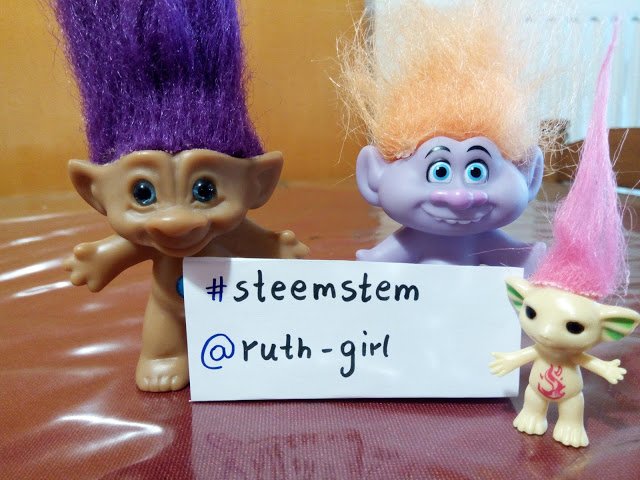
OBJECTIVES
Teach what buoyancy is and what factors it depends on (density of fluid and volume of the submerged object).
DETECTING FORMER KNOWLEDGE
We all have seen how objects float or submerge in liquids (and even though Pennywise whispers in my ears that "They all float down there" I don't believe him). First we should have our children think what would make an object float or submerge within a liquid mass. We can ask questions like:
- How can both a plastic ball and a huge cruise-ship float at sea?
- Why is it easier to float at sea than in a swimming pool?
After the students' curiosity has been "activated" we can go on presenting our theory:
Buoyancy is a force that "works" opposite gravity, by pushing an object upwards when its weight pushes it downwards. In even simpler words, buoyancy is an object's ability to float in a liquid. When buoyancy equals the weight of the submerged object, then it floats. The force of buoyancy depends on several factors, including the specific gravity of the liquid, the volume of the object (that is equal to the displaced volume of the liquid).
Math formula: Fb = p × g × V
Fb = the force of buoyancy (N), p = the liquid's density (kg/m3) , g = acceleration of gravity (9.80 m/s2), V = the displaced volume of the liquid (m3 or liters)

(Image source: wikipedia.org)
EXPERIMENT 1
Buoyancy is related with the specific gravity of the fluid (the ratio of the liquid's density to the density of a reference liquid, usually water).
SG = ρ sample/ ρ reference, where ρ = density
Materials:
- a glass
- an egg
- water
- salt
Process:
- Pour some water in the glass.
- Dip the egg inside.
- Then, remove the egg and put two-three tablespoons of salt.
- Dip the egg again.
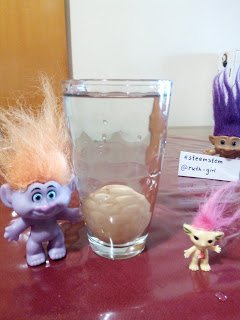
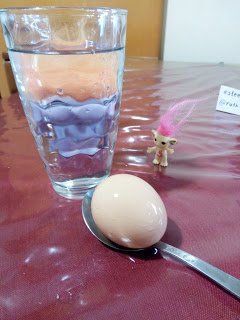
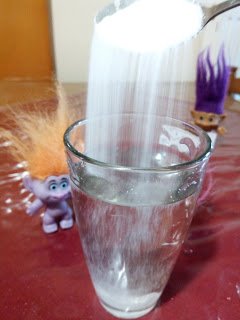
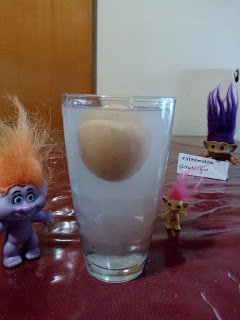
In the first case the egg gets to the bottom. After adding salt to the water, the egg floats.
Conclusion: Water has different special gravity than salt water, so buoyancy increases and the egg floats. That's why swimming in a pool can be harder than swimming in the sea.
EXPERIMENT 2
Children tend to believe that heavy objects will submerge, but how can they explain the fact that ships float? Buoyancy depends on the volume of the object. A great example for kids to understand that is the experiment below:
Materials:
- a big glass
- a smaller plastic glass
- some small objects like nails, pins or marbles
Process:
- Pour some water in the big glass.
- Place some of the marbles inside the smaller glass.
- Put the smaller glass in the big one.
- Then, remove the smaller glass.
- Put all the objects in the big glass and place the smaller glass in the big one again.
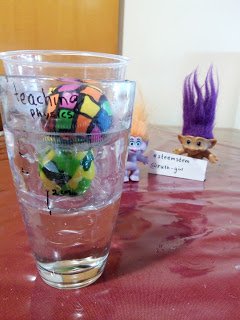
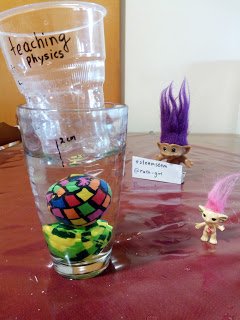
At first there is a balance and the heavy plastic bottle floats. When we take the objects out of the plastic glass and put them directly to the big one, they don't float. Check also how much has the water level risen.
Conclusion: In the second case, buoyancy is not great enough to push the balls to the surface, their weight hasn't changed from the first try, but their volume has.
Note: I know I don't cover the matter completely, this is just a simple demonstration of two easy experiments, ideal for primary school students. You might have noticed that I don't go into further details and math formulas. That is because the aim of those experiments is to make children curious about the results of their observations. For younger children too complex math types are not suitable, we just want to make a simple introduction to the concept. Of course, for older children those experiments can and should be accompanied with more thorough explanations including math formulas, problems and even more complex experiments.
References
wikipedia.org_1
wikipedia.org_2
softschools.com
Panagiotis Koumaras, "A guide to teaching physics through experiments" - Christodoulidis Editions (Thessaloniki 2005)
*All non-credited images by @ruth-girl

Thank you for being here and reading my post, perhaps some of you will find it interesting and give those experiments a try. If you do so, please leave a comment on how they worked for you and your class. You may also want to suggest any other experiments or projects to make this lesson even better. It would make me even happier if you were a parent and tried those simple experiments with your child/children, they are so simple, you can easily do them at home.
Perhaps you'd like to go through my blog, @ruth-girl, and discover plenty of lesson plans along with my bizarre natural phenomena series.

And for those engaging with education, @steemiteducation is here to join all steemian educators in their common cause of making our job easier, more effective and more fun, because...
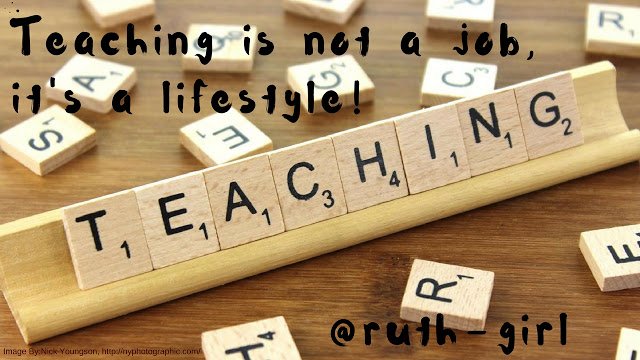
(Original image credits: Nick Youngson - nyphotographic.com)
Finally, the greek community of steemit is here and waiting for you to discover it! Follow the @greek-trail for daily doses of good-quality posts by wonderful writers!
Until my next post,
Steem on, people, and keep smiling!

Upvoted and Resteemed by the Minnows Accelerator Project (MAP).
This article was created by a MAP Member. Any quality blog creator can request to join the Minnows Accelerator Project too.
Read all the articles posted by MAP members.
Please support MAP so that we can continue to support Quality Content Creators.
Thank you!
You can also chat with your kids about the first (and only) steemstem physics challenge. It was all about buoyancy, and discussed a movie they in principle know about :)
The challenge is something we really do with 17-19 years old kids ;)
This is great! It's true that in high school the choices are so much more, because children already know the basics and can do great projects. In primary school we merely try to impress students in order to help them remember concepts and mechanisms, at least that's what I try to do.
Lifting a human with balloons is impressive, isn't it? :D
It sure is!! 0_0
resteem
ΕΥΧΑΡΙΣΤΩΩΩΩΩΩΩ! :D
This post has received a 1.04 % upvote from @drotto thanks to: @banjo.
This post has received a 2.06 % upvote from @buildawhale thanks to: @ruth-girl. Send at least 0.100 SBD to @buildawhale with a post link in the memo field to bid for a portiona of the next 100% upvote.
To support our curation initiative, please vote on my owner, @themarkymark, as a Steem Witness
Congratulations @ruth-girl! You have completed some achievement on Steemit and have been rewarded with new badge(s) :
Click on any badge to view your own Board of Honor on SteemitBoard.
For more information about SteemitBoard, click here
If you no longer want to receive notifications, reply to this comment with the word
STOPis quite interesting and also very practical and simple, because the materials used are easy to access0, I would love to put it into practice in my classes of physics. Although in the current schedule of the school year there are no topics regarding thermodynamics or mechanical fluids could make an exception and teach my students
Thank you @carloserp-2000! If you do please leave a comment to tell me how it worked out! :)
thanks, I will try to explain the theory and build the experiments in a practical and simple way so that students can understand and learn